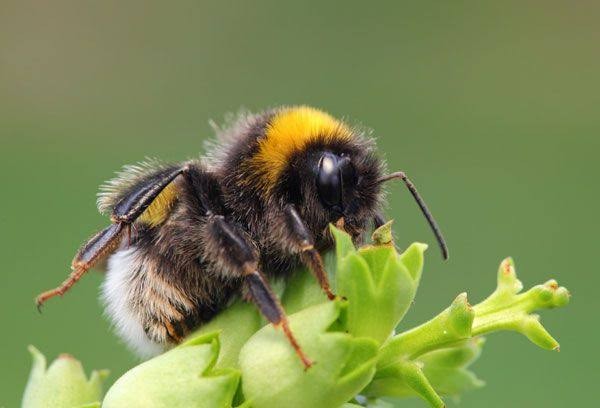Natural pollination of agricultural crops
2023-09-17
Al-Ahsa-The Kingdom of Saudi Arabia
Bumblebees are a type of non-honey-producing bee (Bumbus terrestris) that is used commercially to pollinate the flowers of many crops, such as tomatoes, peppers, eggplant, chard, cantaloupe, raspberries, and strawberries, as well as mango, peaches, apricots, and plums. Bumblebees are characterized by the large size of the insect, which is covered with thick hair to which pollen is attached. It also has modified legs that contain a basket to collect pollen to transport it to the hive for nutrition. Bumblebees are also efficient workers, as they work from early morning until sunset, which represents 18 hours during which a bee visits approximately 1,000 flowers, and visits the same flower more than once, which ensures the transfer of large quantities of pollen to the flower stigmas, to In addition, it is distinguished by the strength and speed of its wings, which works to vibrate the anthers of the flowers and the pollen grains emerge from them and cover the bee’s body with it, and also transfer it to the stigmas of the same flower or flowers on another plant, which increases the setting of flowers to reach 99% compared to other methods of pollination that may occur. There is a loss of yield due to poor pollination that may reach 50%. The quality of pollination also has an impact on increasing the number of seeds inside the fruit, which controls the size (a constant size for all fruits), the weight (the absence of voids inside the fruit), the quality of the fruits (they tolerate transportation and storage for a longer period), and their early maturity (an increase in the price of the fruits). Pollination with bumblebees increases crop yield by a rate of 20 to 30% compared to other methods. Bumblebee workers also work in less than ideal conditions of wind, rain, and fog. It is also less expensive than other methods of pollination (hormone pollination, or shaking pollination); Because it does not require labor and spraying machines, it also makes farmers more careful in using residual pesticides and switching to safer methods of control. To preserve the bumblebees inside his farm, which makes the product pollinated by bumblebees safer and of higher quality.
The use of bumblebees has a clear environmental and economic impact in increasing productivity, uniformity, and earlyness. Therefore, we recommend using bumblebees as a reliable pollination tool on your protected farm or open field.






